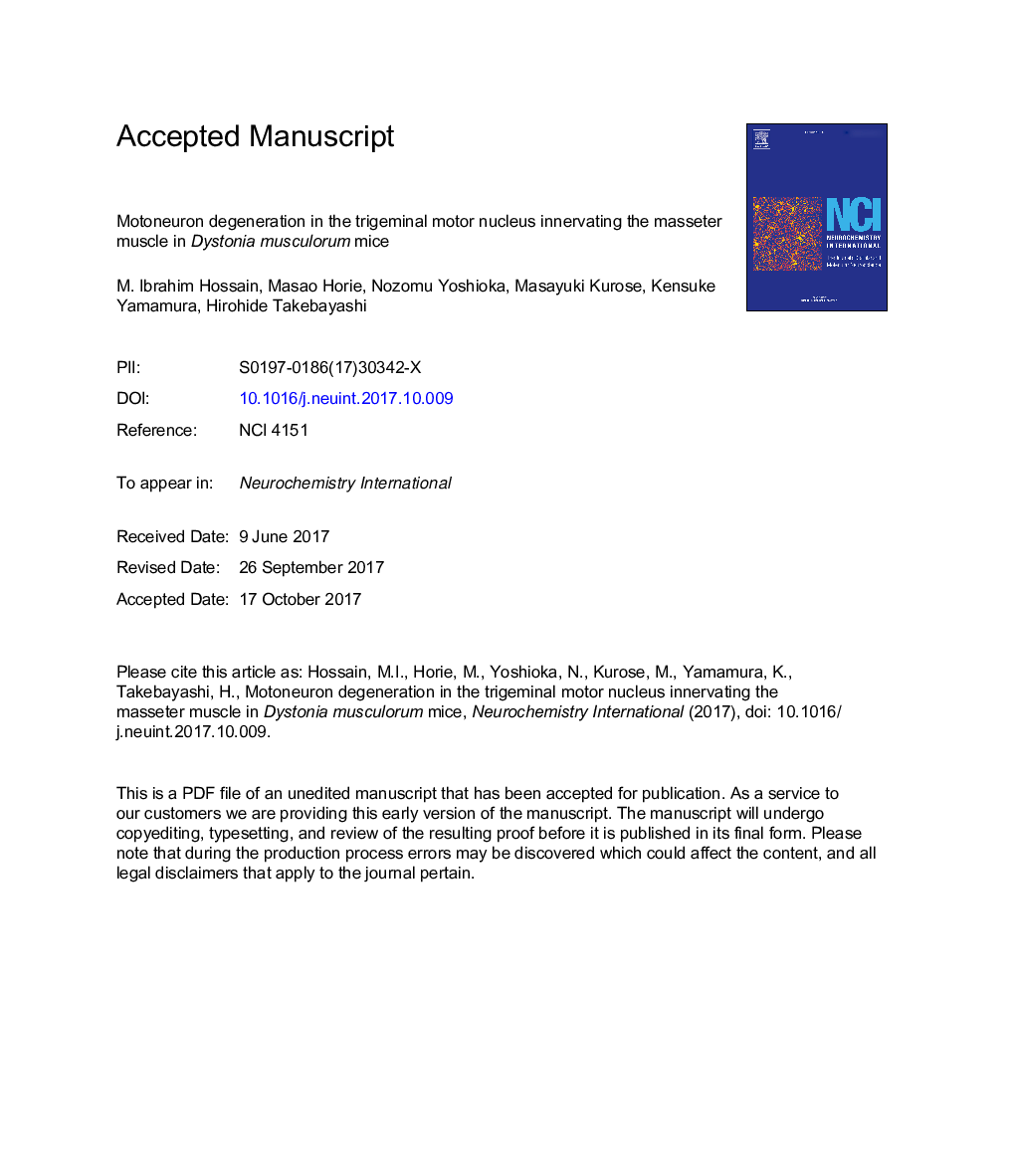| Article ID | Journal | Published Year | Pages | File Type |
|---|---|---|---|---|
| 8956360 | Neurochemistry International | 2018 | 35 Pages |
Abstract
Dystonia musculorum (dt) mice, which have a mutation in the Dystonin (Dst) gene, are used as animal models to investigate the human disease known as hereditary sensory and autonomic neuropathy type VI. Massive neuronal cell death is observed, mainly in the peripheral nervous system (PNS) of dt mice. We and others have recently reported a histopathological feature of these mice that neurofilament (NF) accumulates in various areas of the central nervous system (CNS), including motor pathways. Although dt mice show motor disorder and growth retardation, the causes for these are still unknown. Here we performed histopathological analyses on motor units of the trigeminal motor nucleus (Mo5 nucleus), because they are a good system to understand neuronal responses in the mutant CNS, and abnormalities in this system may lead to problems in mastication, with subsequent growth retardation. We report that motoneurons with NF accumulation in the Mo5 nuclei of DstGt homozygous mice express the stress-induced genes CHOP, ATF3, and lipocalin 2 (Lcn2). We also show a reduced number of Mo5 motoneurons and a reduced size of Mo5 nuclei in DstGt homozygous mice, possibly due to apoptosis, given the presence of cleaved caspase 3-positive Mo5 motoneurons. In the mandibular (V3) branches of the trigeminal nerve, which contains axons of Mo5 motoneurons and trigeminal sensory neurons, there was infiltration of Iba1-positive macrophages. Finally, we report atrophy of the masseter muscles in DstGt homozygous mice, which showed abnormal nuclear localization of myofibrils and increased expression of atrogin-1 mRNA, a muscle atrophy-related gene and weaker masseter muscle strength with uncontrolled muscle activity by electromyography (EMG). Taken together, our findings strongly suggest that mastication in dt mice is affected due to abnormalities of Mo5 motoneurons and masseter muscles, leading to growth retardation at the post-weaning stages.
Keywords
ISHLCN2BP230PFADAPIBPAG1bullous pemphigoid antigen 1DSTCTBATF3MBPGFAPDRGMo54′,6-diamidino-2-phenylindoleAUCC/EBP homologous proteinIn situ hybridizationelectromyographyEMGIHCImmunohistochemistryNeurodegenerationCHOPCNSDystoninpostnatal dayscentral nervous systemperipheral nervous systemMandibular nervemasseter muscleactivating transcription factor 3Lipocalin 2area under the curveknockoutneurofilamentMotor neuronTrigeminal motor nucleusHematoxylin and EosinparaformaldehydeGlial fibrillary acidic proteinMyelin basic proteinChATPNScholera toxin B subunitcholine acetyltransferasedorsal root ganglia
Related Topics
Life Sciences
Biochemistry, Genetics and Molecular Biology
Cell Biology
Authors
M. Ibrahim Hossain, Masao Horie, Nozomu Yoshioka, Masayuki Kurose, Kensuke Yamamura, Hirohide Takebayashi,
